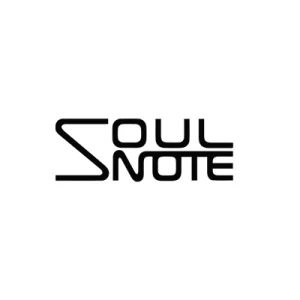Soulnote D-1N Digital to Analogue Converter
The D-1N is Soulnote’s entry level Digital to Analogue Converter and offers a superb feature set and specification. In performance terms it ticks lots of boxes, the presentation is typically Soulnote, highly engaging, natural, accurate tonality and a wonderful sense of simply sounding correct, groans at the ready, but the music is full of life and soul.
The Soulnote D-1N is literally just a DAC, there is no network connection and therefore no streaming included, it is reliant on connecting a digital transport of some flavour to it, whether that is a Melco, Innous, Aurender, a Mac Mini or even a CD transport.
The build quality and finish of the D-1N is superb, Series 2 and Series 3 offer an even more premium finish and build, but Series 1 certainly cuts no corners at the price points.
The D-1N uses the ESS9038PRO DAC chipset, the USB-B connection is the most commonly used input and this supports up to and including 32-bit/768 kHz PCM and 22.6 MHz DSD (DSD512) sound sources. There are also 2 RCA inputs and a single AES/EBU input.
In addition to these 4 digital inputs there are analogue outputs on both RCA and XLR. On the front panel you may have spotted a lock range button, this allows you to choose 1 of 4 settings – this enables you to match the clock accuracy of transmitting devices connected to the D-1N.
When used in PCM mode there is a non-oversampling mode, this will not function with DSD material.
On demonstration now along with the A-1 and A-2 amplifiers and the D-2 DAC
From Soulnote……
Compatibility
Compatible with max. 32-bit/768 kHz PCM and max. 22.6 MHz DSD (DSD512) sound sources. In addition to compatibility with new high-resolution sound sources across a range of PCM and DAD formats from USB inputs, the D-1N also supports coaxial digital inputs (2 systems) and AES/EBU.
ES9038PRO
The ES9038PRO, ESS’ flagship 32-bit DAC, is installed separately in the left and right channels through a monaural mode that achieves the world’s highest specs (DNR140 dB). SOULNOTE’s original discrete nonnegative feedback amplifier that extends into the MHz region receives up to 120 mA from the powerful DAC current supply and amplifies this power for the output. The combination of the ES9038PRO and the discrete non-NFB amplifier achieves vibrant music playback bursting with energy that cannot be obtained from standard OP amplifier circuits.
A clock with ultra-low jitter crystals
Because it has the largest impact on sound quality, the clock uses ultra-low jitter crystals with phase jitter of less than 1 ps. The layout places it as close to the DAC chip as possible to create the ideal clock-wave pattern.
A power transformer with a 260 VA large-scale toroidal transformer
The power transformer uses a 260 VA large-scale toroidal transformer. This creates a power amplifier class non-NFB power supply. With an exceptionally high voltage setting of ±43 V, this discrete non-NFB power supply also used in amplifiers to offer playback that is both detailed in its spatial expression and filled with energy.
Eight different power supplies
Equipped with eight different power supplies that use our original high-speed discrete regulators. The DAC peripheral circuits employ independent power supplies for the left and right channels in both analog power supply and digital power supply. The D-1N also contains a power supply for the crystals, one for USB, one for logic, and one for the SPDIF differential receiver. These eight power supplies use SOULNOTE’s original high-speed discrete regulators that prioritize sound quality to let the high-voltage ES9038PRO’s true potential shine.
NOS mode utilization
In addition to the conventional FIR oversampling mode, the D-1N also includes a new non over sampling mode, which is basically a non negative feedback version adapted to operate in the digital domain. This mode does not generate the pre- and post-echoes observed in FIR oversampling. It also boasts extremely low noise levels with analog outputs, with no difference in levels between the two modes.
Impulse output waveform with an FIR oversampling filter (D-1N analog output)
Pre- and post-echoes are artificial “sounds” created by data calculations before and after the data is interpolated. They make waveforms like sine waves appear smoother, but calculation algorithms can affect the sound quality or ambiguity and be added to the time axis.
Impulse output waveform in non-oversampling mode (D-1N analog output)
This waveform can only be achieved by combining a non-NFB discrete amplifier with superb transient response performance. Because music waveforms are actually a series of impulse waveforms of different heights, the non-oversampling mode eliminates any ambiguity in the time axis information, creating more realistic and natural sound quality and an expansive listening environment to the human ear, which is extremely sensitive to the time axis.
* The non-oversampling mode cannot be used with DSD.
Uses the groundbreaking Bulk Pet transfer method
USB-Audio generally transfers data using the Isochronous transfer method. The D-1N uses Bulk Pet, a new Bulk transfer method developed by Interface Corporation. The Bulk transfer method results in reduced loads for computers and D/A converters, ushering in the next dimension in playback sound quality.
* Dedicated drivers must be installed on your computer when using Bulk Pet.
* There is no need to update the firmware when using Bulk Pet with the D-1N.
Metallic insulators as standard equipment (when under load)
Though plastic insulators are the conventional standard, we now use metallic insulators since they promote higher sound quality.
Lock range switching functions to extract the best quality from connected equipment
You can choose one of four stages for the optimal lock range to match the clock accuracy of transmitting devices connected to the D-1N.












